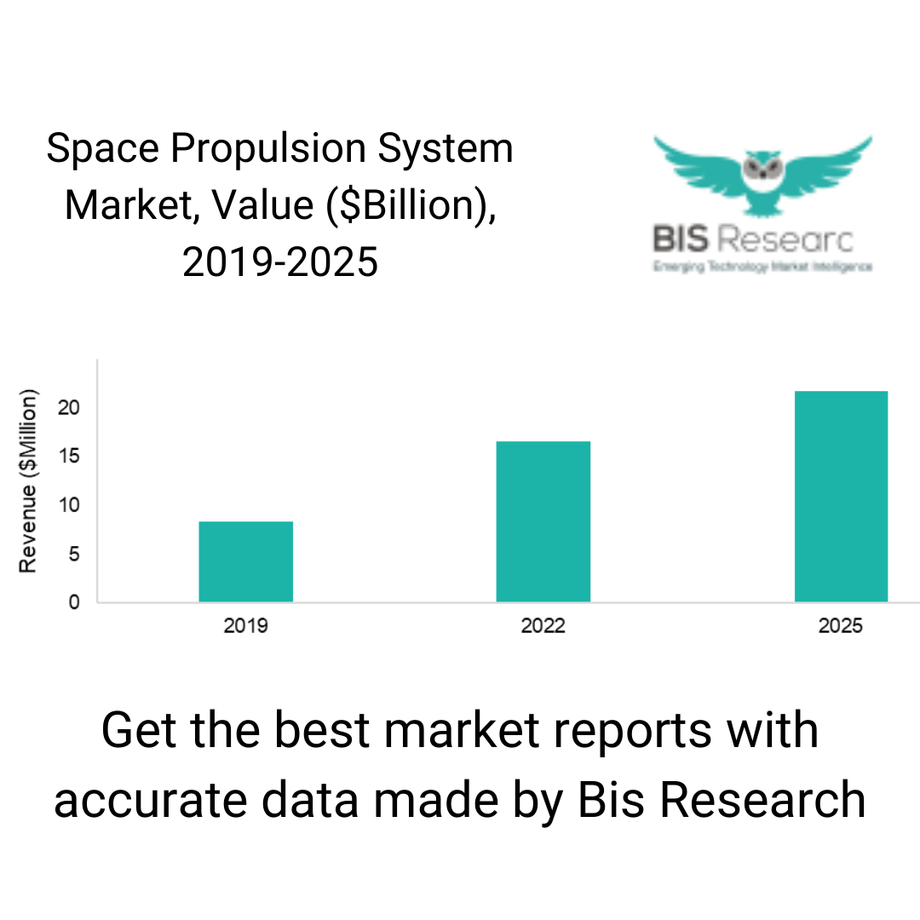The space sector has been witnessing numerous developments since the past years, due to several factors such as cost-effective systems due to technological advances, increasing private investments by emerging players in the industry, and increasing need for better communication and connectivity. The space industry is currently driven by a series of missions, which utilize resources to create value and benefit to the society, globally, in terms of understanding, exploring, researching, managing, and utilizing space. Presently, the space industry includes a collection of critical technologies such as communication, remote sensing, and global positioning satellites.
The space propulsion system market, which was an exclusive domain of the U.S. and Russia, is now accessible to the other nations as well, in which, companies from the U.S., Europe, China, India, Russia and Japan, among others compete. In 2019, the U.S. and Russia were the dominant countries that made close to 50 rocket launches, wherein propulsion systems were provided by companies such as SpaceX, NPO Energomash (Glushko), and Aerojet Rocketdyne. However, new companies are entering the propulsion system industry. For instance, in June 2020, Accion System signed a cooperative research development agreement with the U.S. Air Force for the development of electrospray thrusters and the TILE propulsion system for deploying small satellite. Furthermore, in 2019, SpaceX tested Raptor engine for the first time, with methane and liquid oxygen as a propellant. This engine is currently under development and will be used for SpaceX’s private moon mission.
In terms of value, the global space propulsion system market is expected to reach $21.79 billion by 2025 from $8.30 billion in 2019 at a CAGR 11.76% during the forecast period 2020-2025. In 2019, the space propulsion system market was valued at $8.30 billion and is expected to reach $21.79 billion by 2025, growing at a CAGR of 11.76% during the forecast period, 2020-2025. The growth in the space propulsion system market is majorly attributed to significant technological advancements in this field. Thus, it is fostering the market for propulsion systems in the coming years. The market is mature in countries such as the U.S., France, China and Japan and is gaining popularity in countries such as India, Italy, and Germany.
North America: The Frontrunner in Space Propulsion System Market:
The space propulsion market has witnessed different market dynamics across various regions of the globe. Moreover, the space propulsion system companies is expected to witness rising demand from countries such as China, the U.K., and the U.S. The region is expected to grow at a CAGR of 12.12% during the forecast period 2020-2025. The growth of the region is mainly driven by constant developments in launch vehicle technologies by the government space organizations and private companies. Furthermore, increased spending in the launch industry by government space organizations, such as JAXA, Korean Committee of Space Technology, China Academy of Launch Vehicle Technology, and ISRO, is expected to maintain the region’s dominance in the market throughout the forecast period. North America currently dominates the space propulsion system market with a share of 44.20% as of 2019.
The key players that are actively participating in the global space propulsion system market include IHI Corporation, Lockheed Martin Corporation, Mitsubishi Heavy Industries, Ltd., Northrop Grumman Corporation, Airbus SAS, Safran, OHB System AG, Thales Group, Aerojet Rocketdyne and Moog Inc., Space Exploration Technologies Corp. (SpaceX), Ariane Group GmbH, Blue Origin, Phase Four, and Accion Systems Inc.
Key Questions Answered in this Report:
• What are the trends in the global space propulsion system market across different regions?
• What are the major driving forces that tend to increase the demand for space propulsion systems during the forecast period 2020-2025?
• What are the major challenges inhibiting the growth of the space propulsion systems market?
• What was the revenue generated in the global space propulsion system market by payload range in 2019?
• Which end user of the space propulsion system market (government and commercial) is expected to dominate the market in the coming years?
• What was the revenue generated in the global space propulsion system market by end user in 2019, and what are the estimates by 2025?
• Which application (satellite and launch vehicles) is expected to dominate the space propulsion system market in the coming years?
• What is the estimated revenue to be generated by the global space propulsion system market across different regions (North America, Europe, Asia-Pacific, and Rest-of-the-World) during the forecast period?
• Which are the key players in the global space propulsion system market, and what are the new strategies that are being adopted by them to make a mark in the industry?
• What major opportunities do the space propulsion system market companies foresee in the next five years?
• What is the impact of COVID-19 on the space sector value chain in upstream, midstream, and downstream parts?
• What is the competitive strength of the key leading players in the space propulsion systems market?
Download the free sample space propulsion systems report:

























